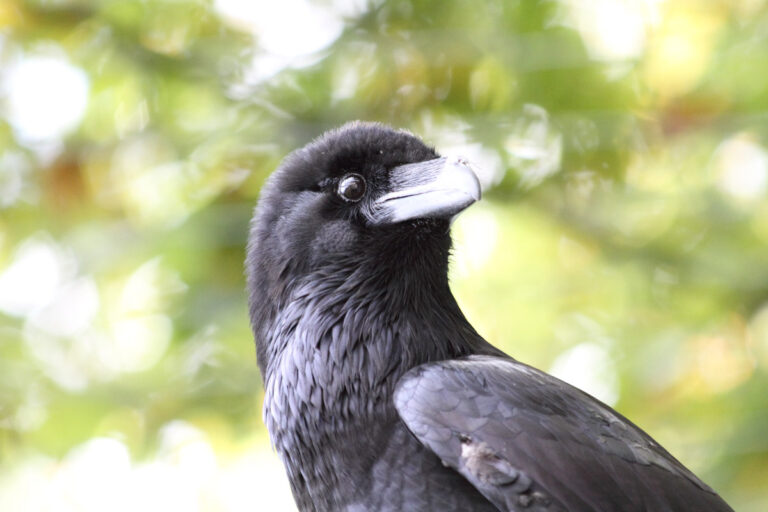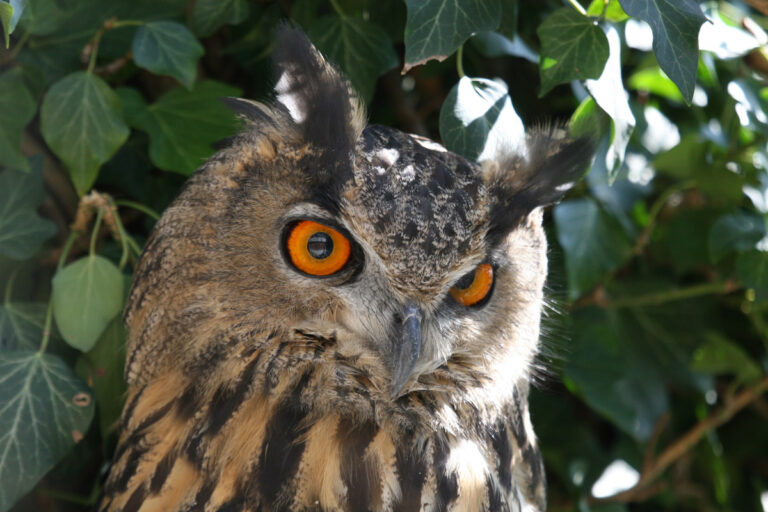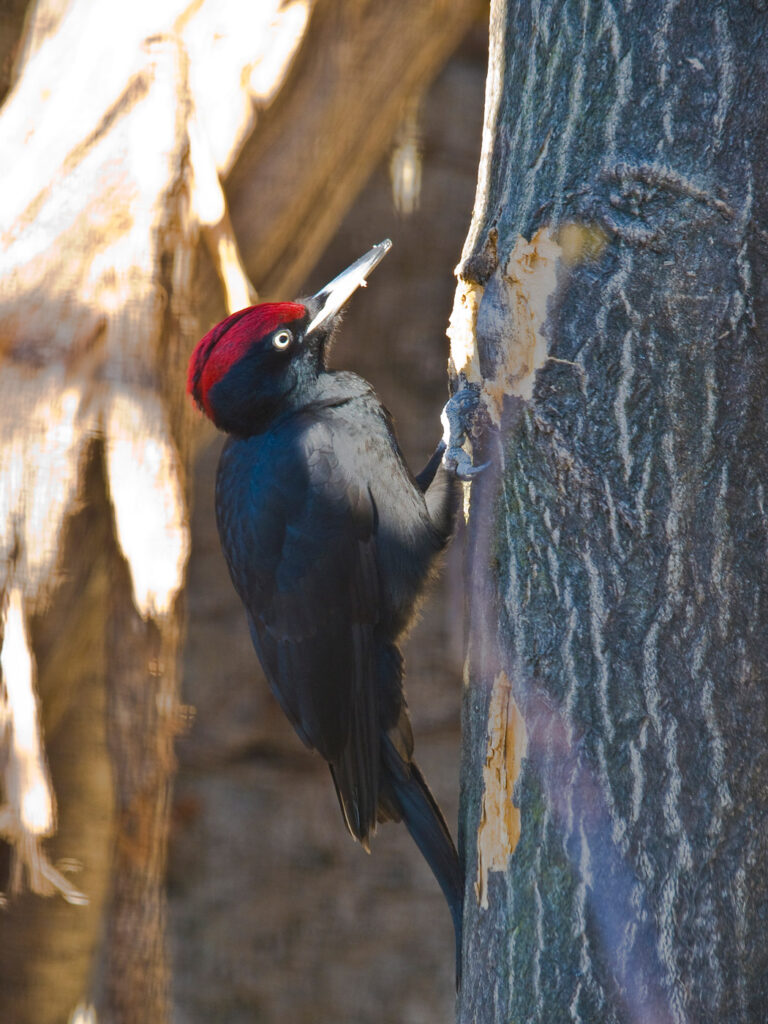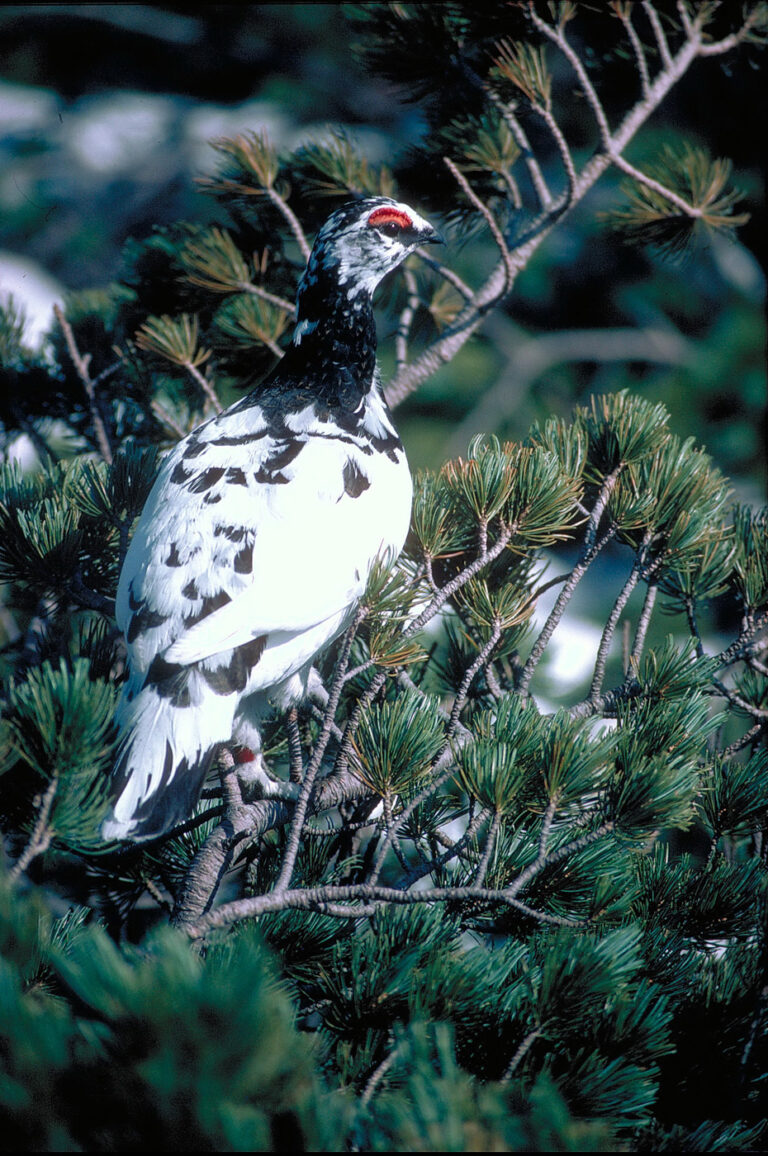Ural owl
In some owls, the females are slightly larger and heavier than the males. This difference is an adaptation to the defence of the young birds. The female broods from the first egg, so that there are young birds of different ages in a nest. The male, on the other hand, provides the prey that the female feeds to the young. The Ural owl, closely related to the tawny owl and quite similar to it, was a rare, sporadically seen breeding bird in the Alps, with its main distribution in the large forests of north-east Europe. The Alpine Zoo is involved in a breeding and reintroduction programme in Austria.
- Only after several attempts to get closer, nesting site inspections and wedding gifts (handing over prey) do two hawk owls get involved with each other. Then, occasionally, they can even be seen grooming and scratching each other.
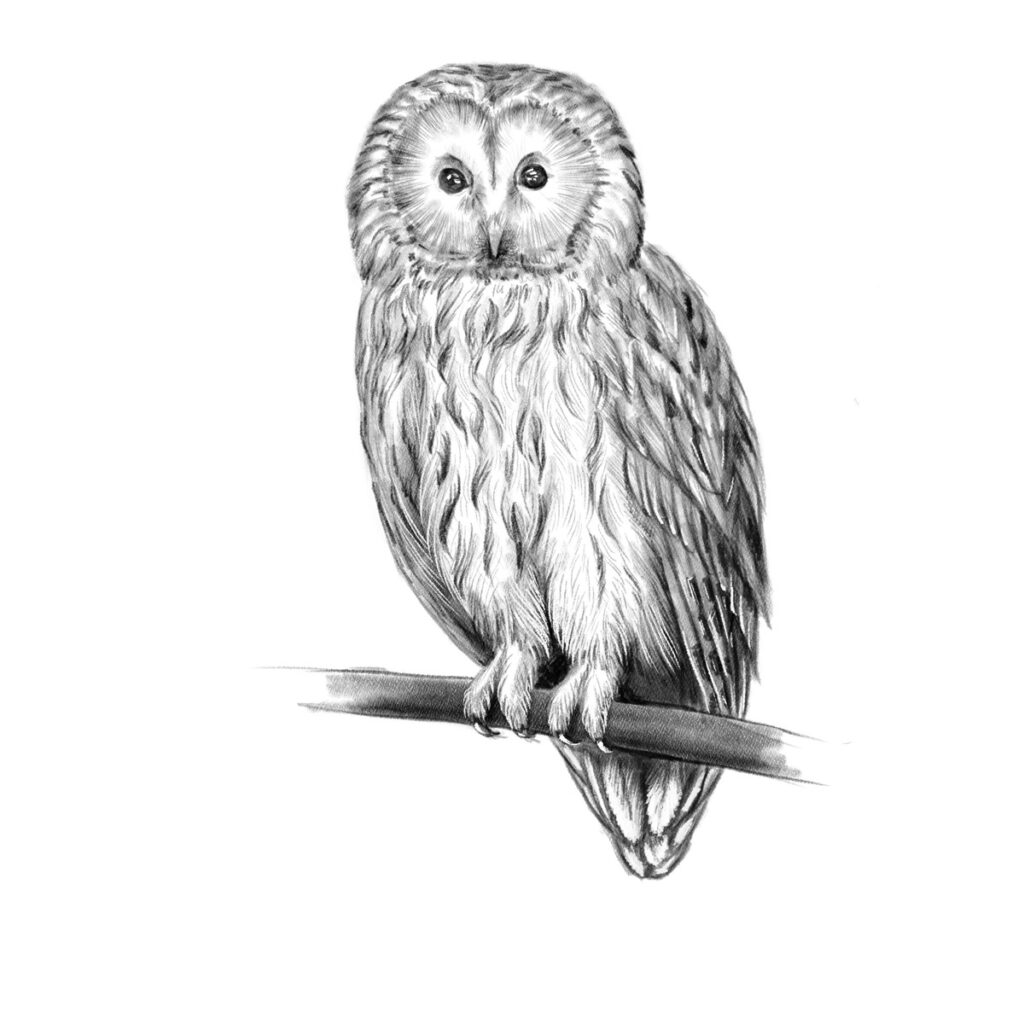
SCIENTIFIC NAME
Strix uralensis
AGE
- up to 20 years
FOOD
- Small mammals
- Small birds
- Amphibians
- Insects
FINE
- only the human being
WEIGHT
- up to 1.5 kg
Wingspan: 60 - 62 cm
FURTHER BIRDS
We look forward to seeing you
Experience a fascinating world full of adventure and amazing animal encounters. Plan your visit to the zoo now and immerse yourself in the heart of nature!

